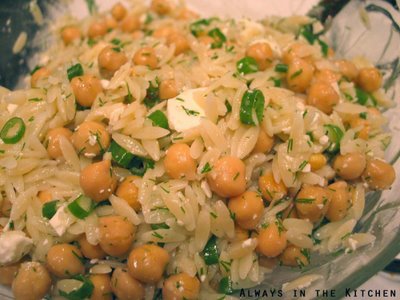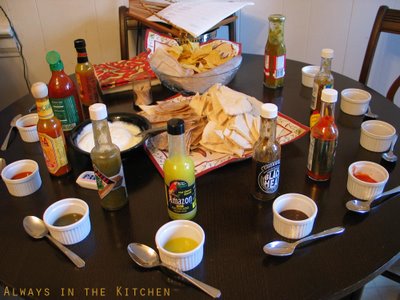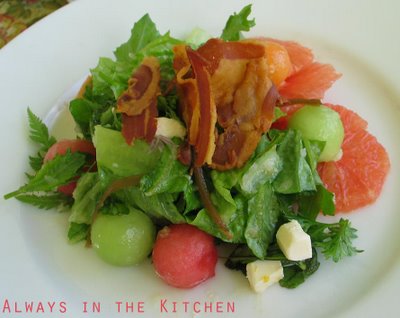 Summer is indisputably salad-time. Appetites are a little supressed from the heat, and an abundance of fresh fruit, vegetables, and herbs cry out for use. Not only are our appetites a little down - we still get hungry, but seem to fill up faster - but our desire to do much work in the kitchen (or out of it) also fades. Fortunately, the summer salad is a perfect opportunity for some easy, make-head, delicious dinner options.
Summer is indisputably salad-time. Appetites are a little supressed from the heat, and an abundance of fresh fruit, vegetables, and herbs cry out for use. Not only are our appetites a little down - we still get hungry, but seem to fill up faster - but our desire to do much work in the kitchen (or out of it) also fades. Fortunately, the summer salad is a perfect opportunity for some easy, make-head, delicious dinner options.You could serve this as a side dish, and I often have, or take it as a potluck item that will stand out beside other pasta salads, or indeed, hold its own against many a main course, or you can cram it into pita for a quick bite on the go. Sometimes, if I'm really feeling worn out, I'll just sit down to a bowl of this in front of the television and let my brain turn criticizing advertisements, or snarking at the shows on FoodTV.
It keeps really well in a sealed, tupperware-type container, for about a week. Doubtless, you will have eaten it all up long before then. As an added bonus, this dish has under 30% of its calories from fat, so it's fairly healthy, too. The use of low GI ingredients (chickpeas and lemon juice) mean that it's value on the glycemic index is probably quite low - which means that it will fill you up without wreaking havoc on your glucose levels.
Chickpea & Orzo Salad
(adapted from Cooking Light's Simple Summer Suppers)
1 cup uncooked orzo
3/4 cup sliced green onions
1/2 cup crumbled feta
1/4 cup chopped fresh dill
1 19 oz. can Chickpeas (garbanzo beans) - drained
zest and juice of one lemon
1 1/2 tablespoons extra-virgin olive oil
1 tablespoon cold water
1/2 teaspoon kosher salt
1 - 2 cloves minced fresh garlic
Cook orzo until done in lightly salted water - about five minutes. Take care not to overcook, as you don't want the pasta to become mushy. Al dente is the goal. Drain, and rinse with cold water. Drain thoroughly, and place in large bowl. Add drained chickpeas, green onions, dill, lemon zest and feta to the bowl of pasta, and toss gently to distribute evenly. Combine juice, water, garlic, salt, and olive oil, and stir well. Pour dressing over the salad, folding the ingredients gently so to coat everything thoroughly.
Try not to eat it all before it makes it into the fridge. You can serve it right away, but it's terrific very cold from the fridge - especially with a nice glass of crisp white wine.































